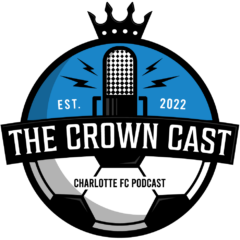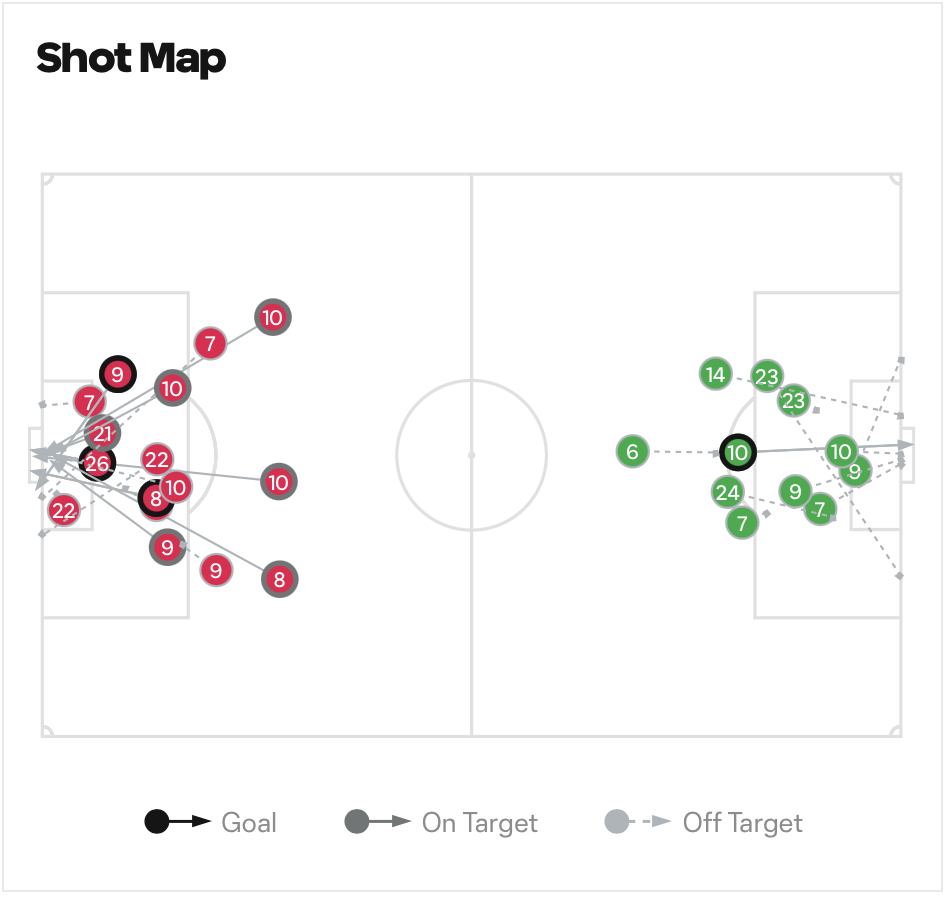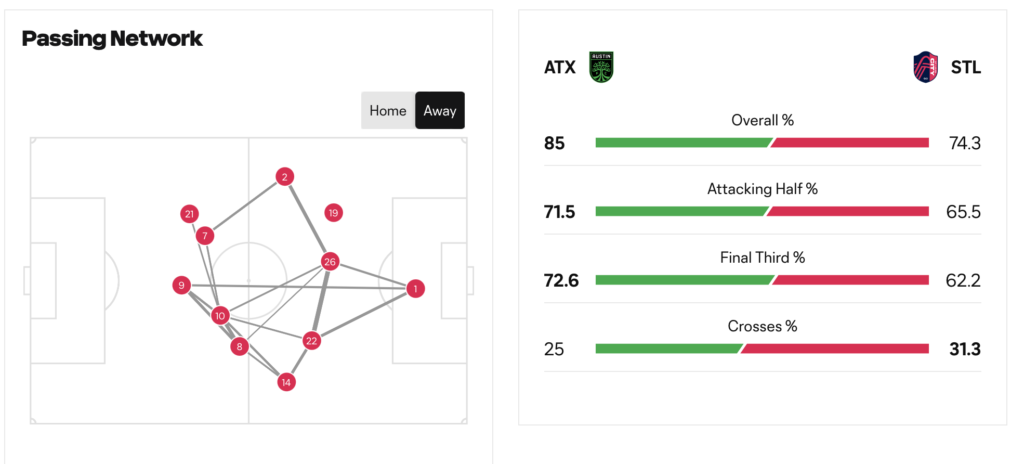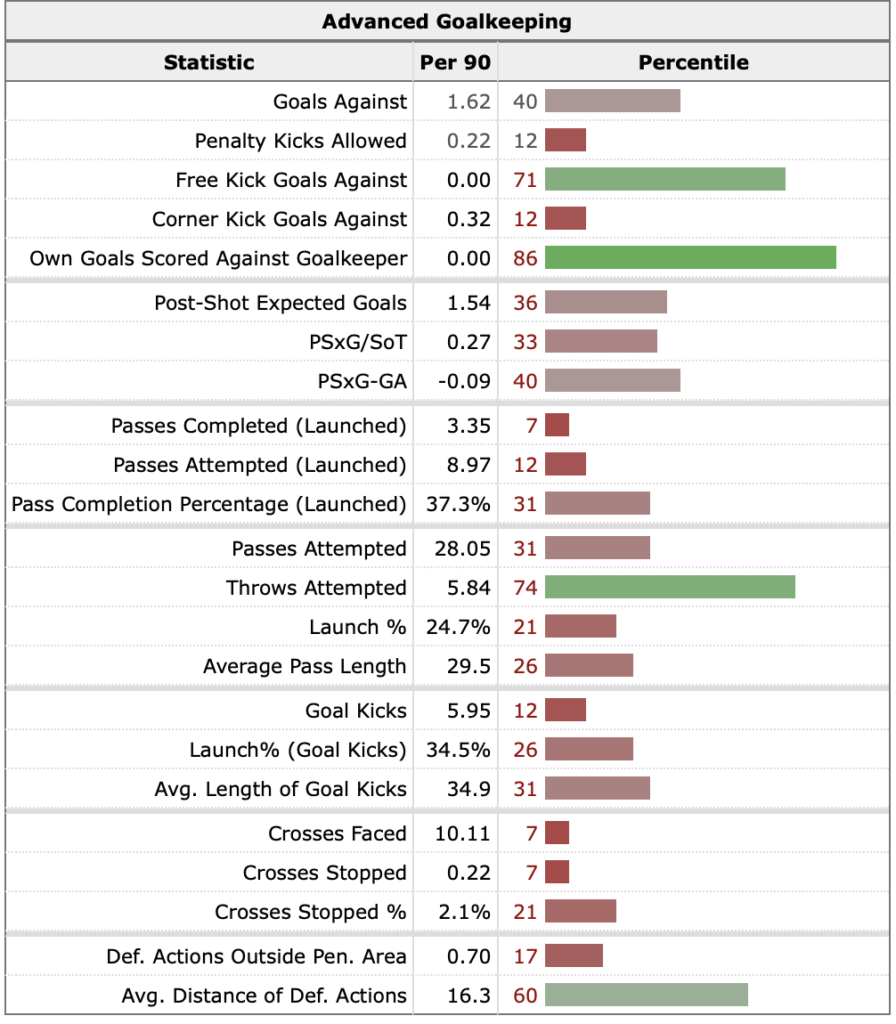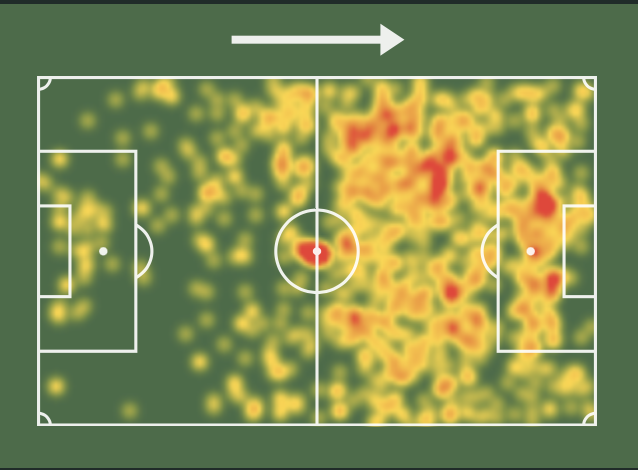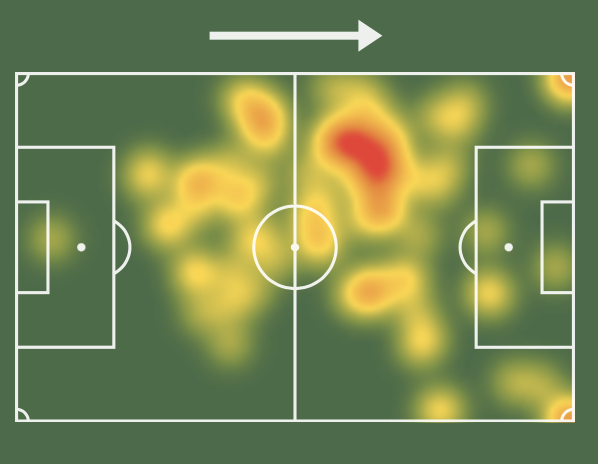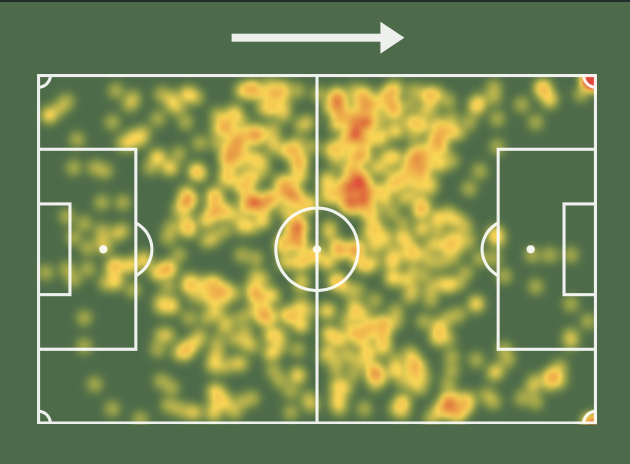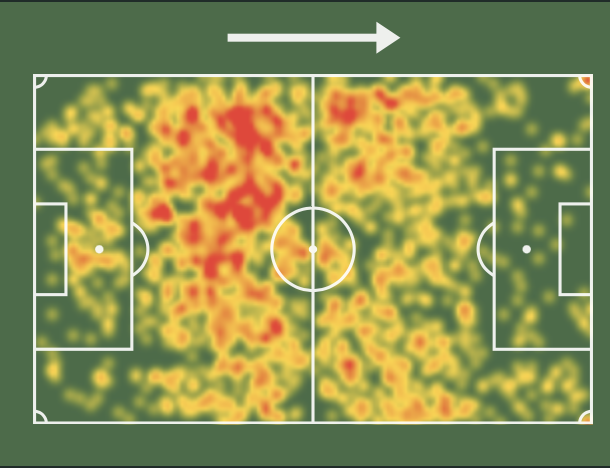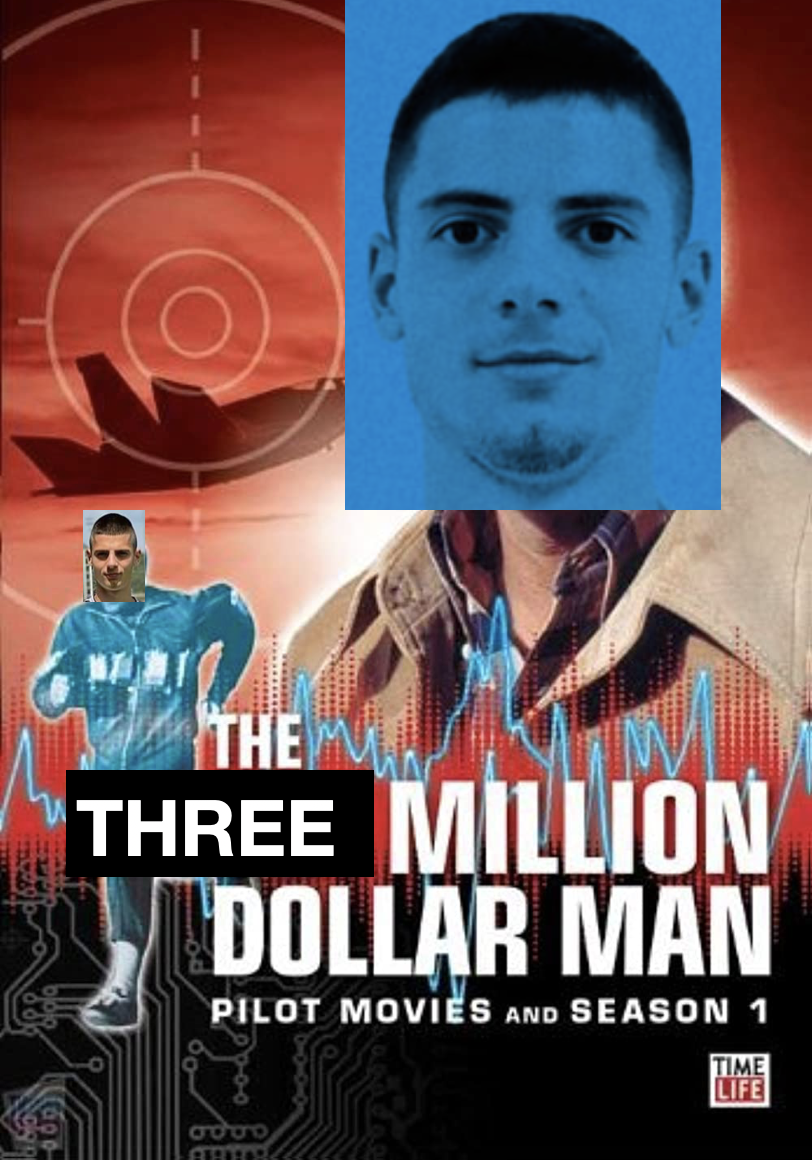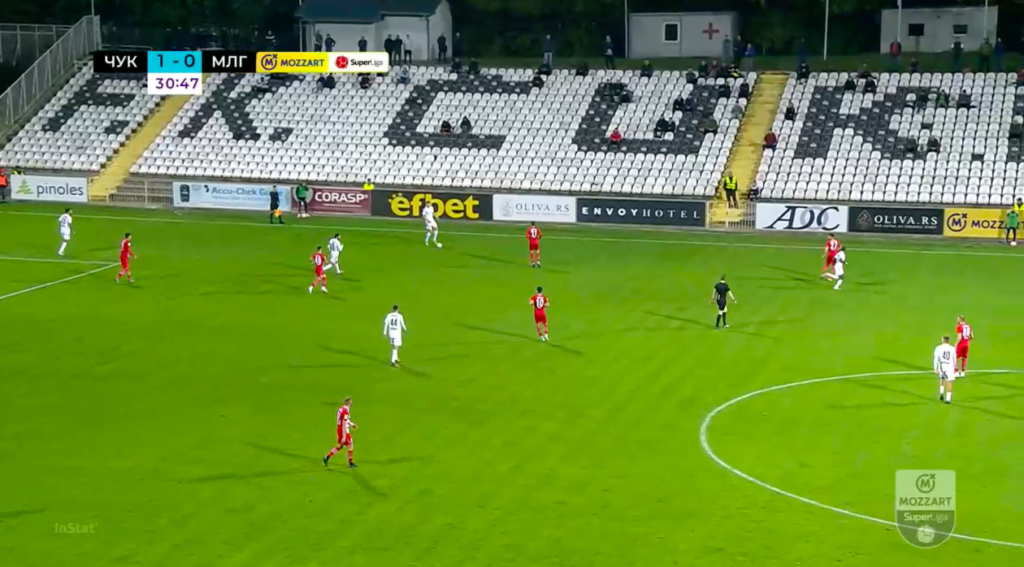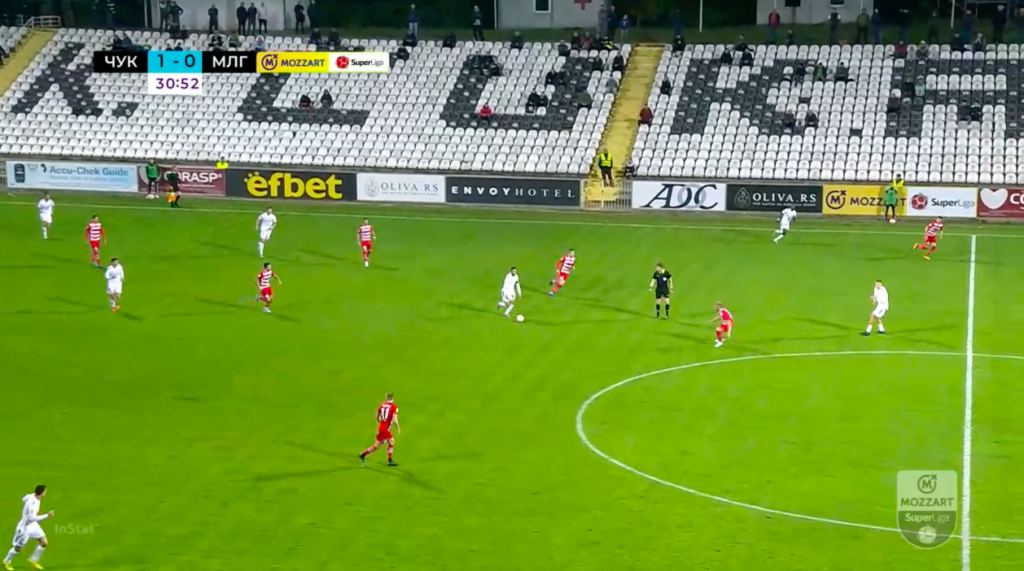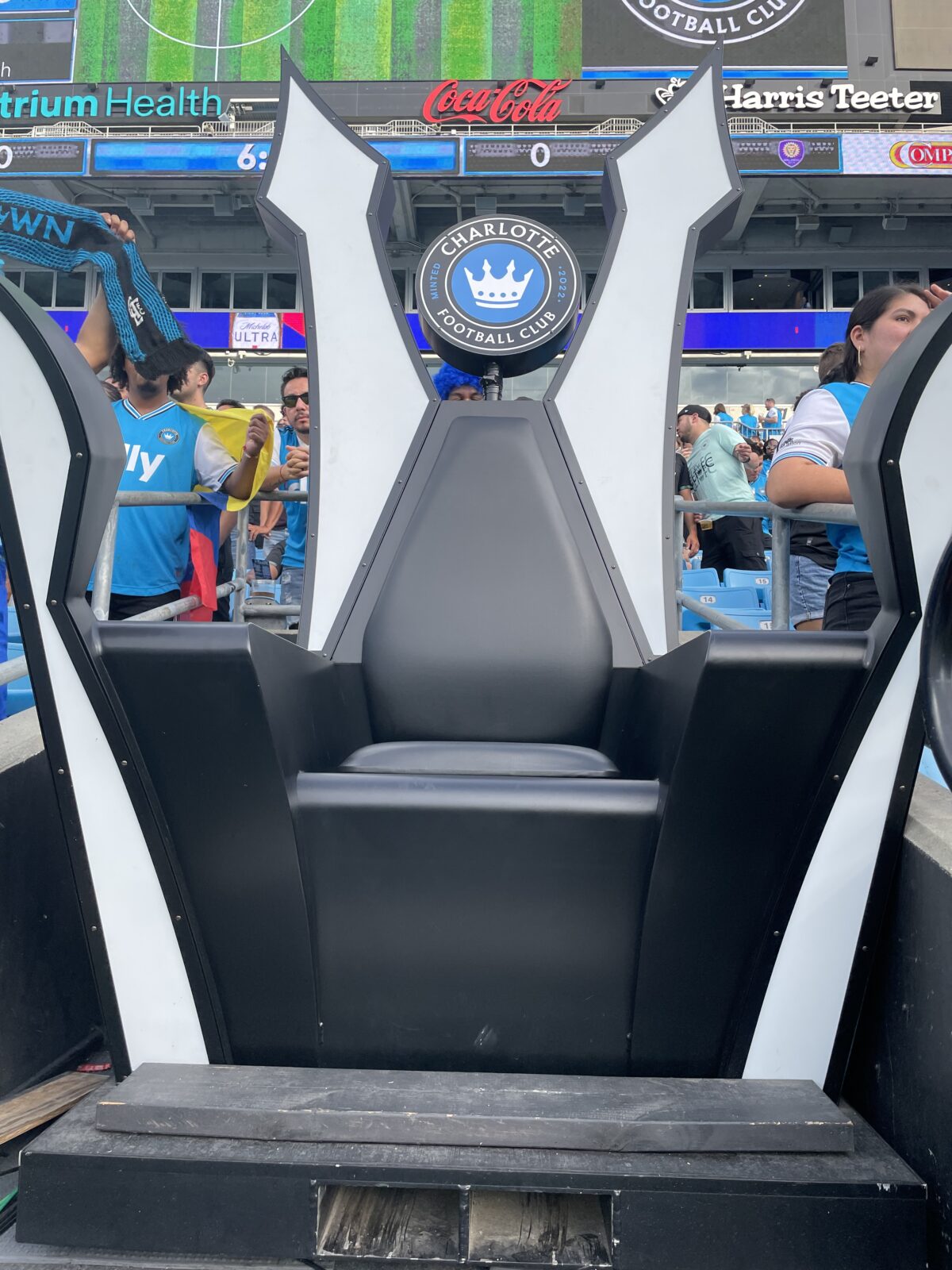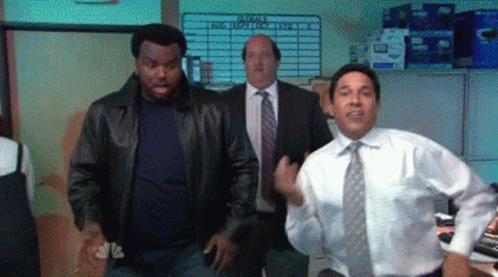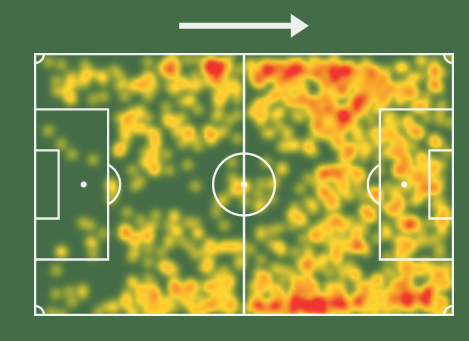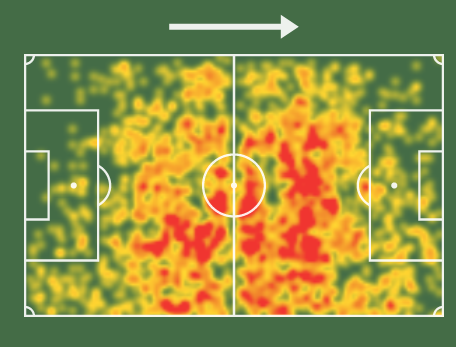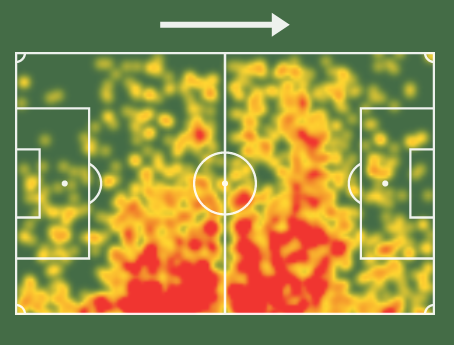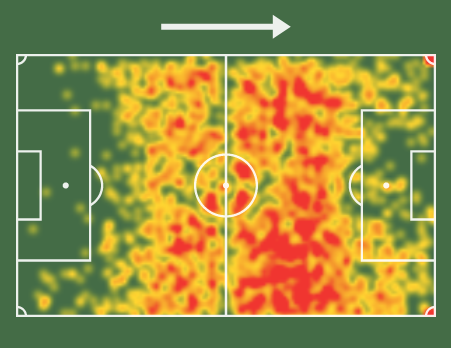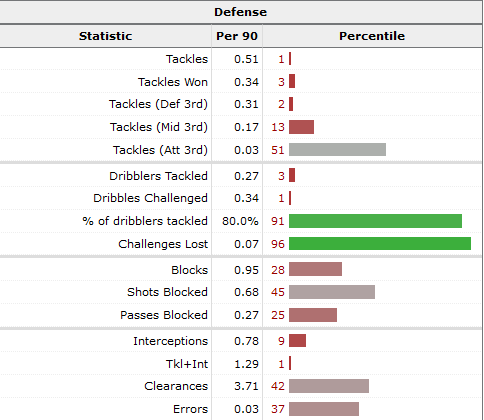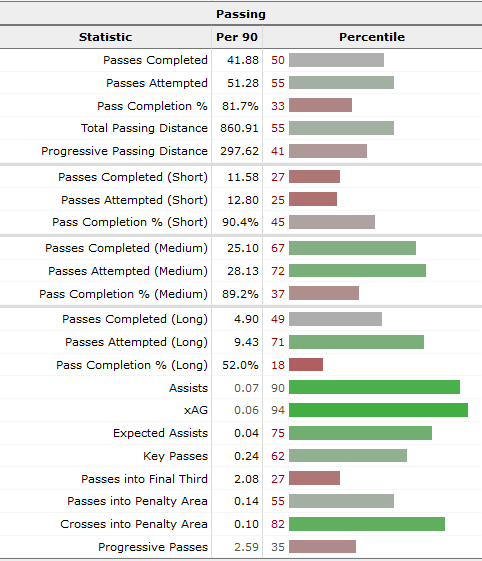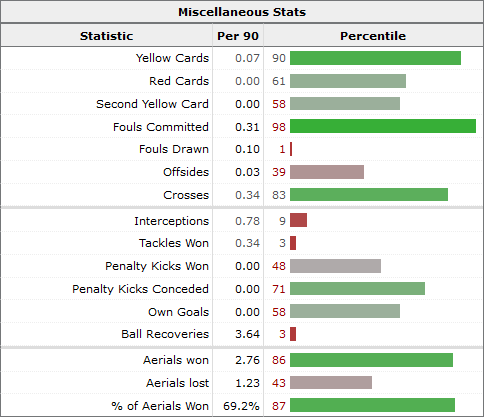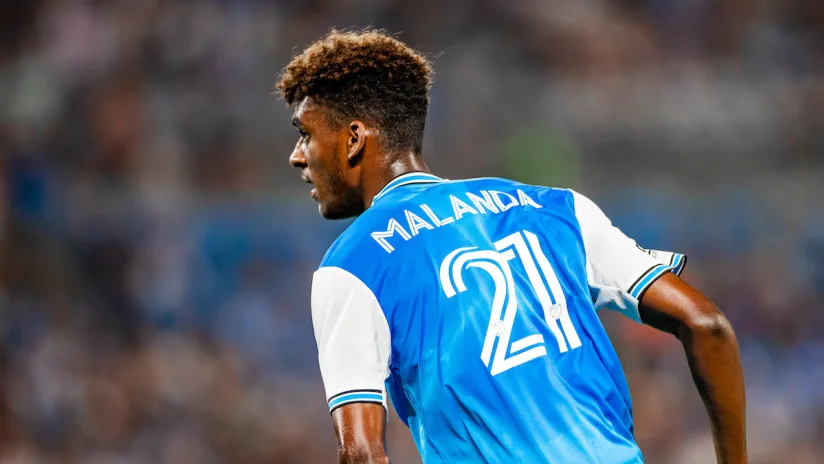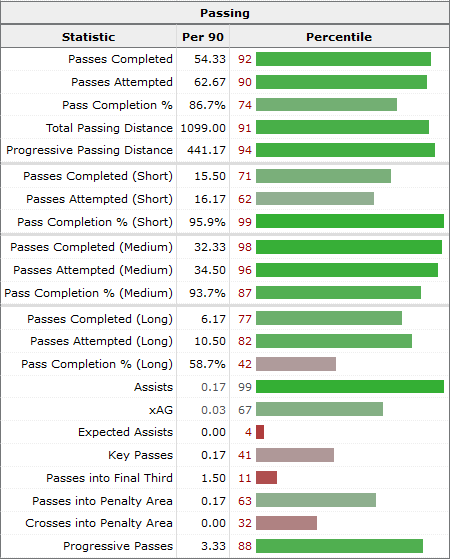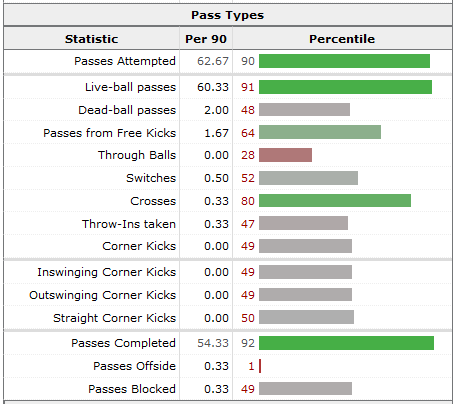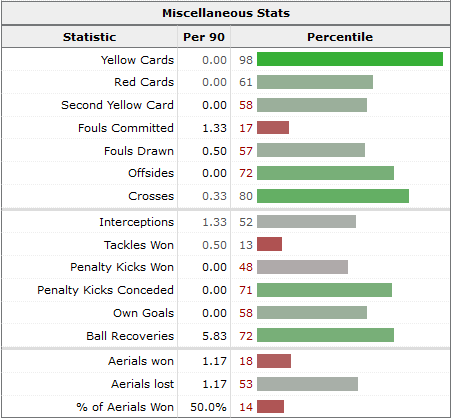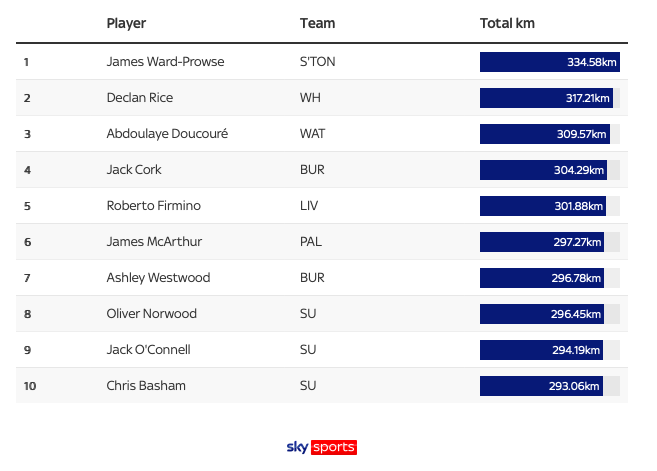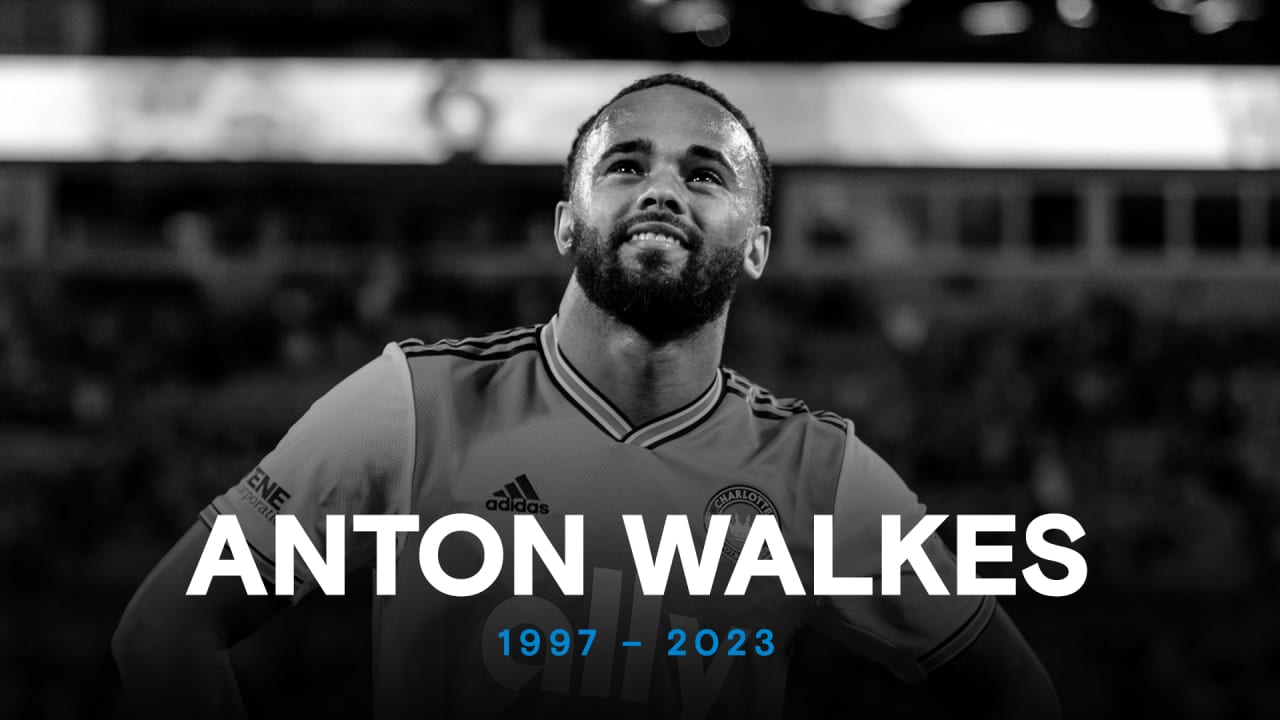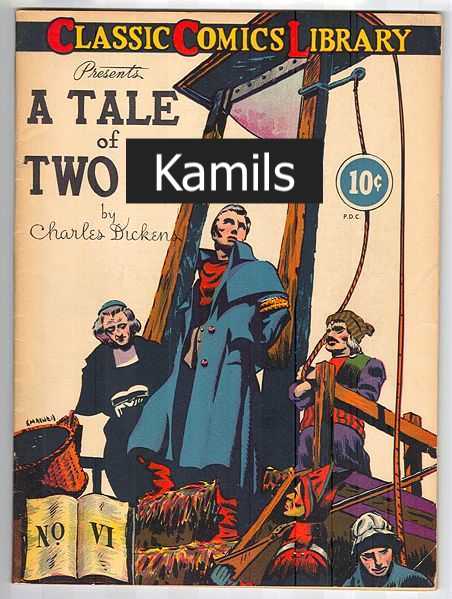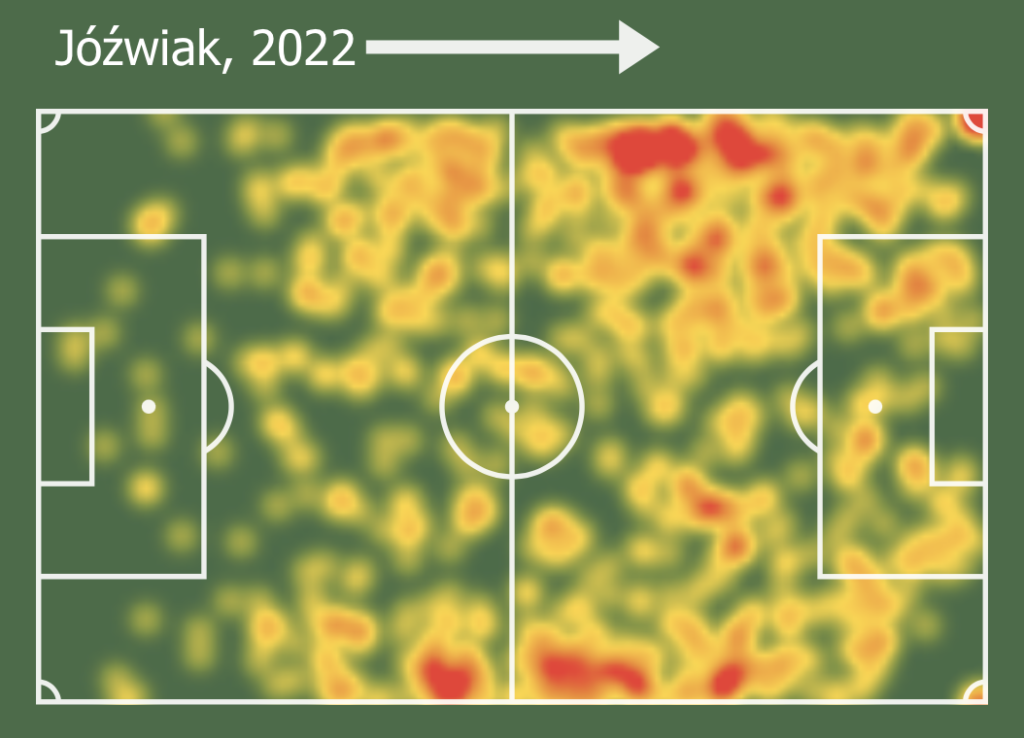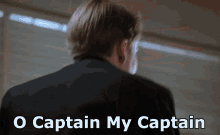I’ve seen a lot of panic amongst the Charlotte faithful this week. Starting with 2 losses–one against a new expansion club–will do that. However, I want to provide some hope.
First, last year, Charlotte started with 3 straight losses, getting outscored 6-1 and 4-0 in the first 2 games. We’ve only been outscored 4-1 so far this year! Progress!
In all seriousness, though, even with the poor start last year, Charlotte still managed 42 points and barely missed out on the playoffs. Now, some among you may then blame this poor start for us missing out. There is an argument for that. However, I would point to the run of games in late August-early September as what did us in.
We lost 2-1 to Orlando at home on 8/21, followed that up with a 2-0 loss at home to Toronto on 8/27, and then lost on the road to Cincinnati 2-0 on 9/3. Cincinnati and Orlando both finished above us, with the latter getting the 7th seed with 48 points. Toronto finished 13th in the East last year on 34 points.
The point is, a run of bad games can happen. You can’t dig too deep a hole, but I’m simply not panicked yet. I’m not alone in that amongst my colleagues here at The Crown Cast. Unlike Joseph Lowery, who has us as an 8/10 on the panic meter, Logan and I are only at a 4. Justin is a bit higher at a 5, while Euan is lower at a 3. A blowout loss might change things but as of now, I’m feeling ok.
Is good Atlanta back?
Atlanta is currently 4th in the East on 4 points, having won (2-1 at home against San Jose) and drawn (1-1 against Toronto at home) in each of their first two games.
It’s too early to say if this Atlanta team will be back to its normal standard, but I think the indications are good. They’ve turned over the roster, kept talent from last year, and added some exciting talent this year.
Lineups
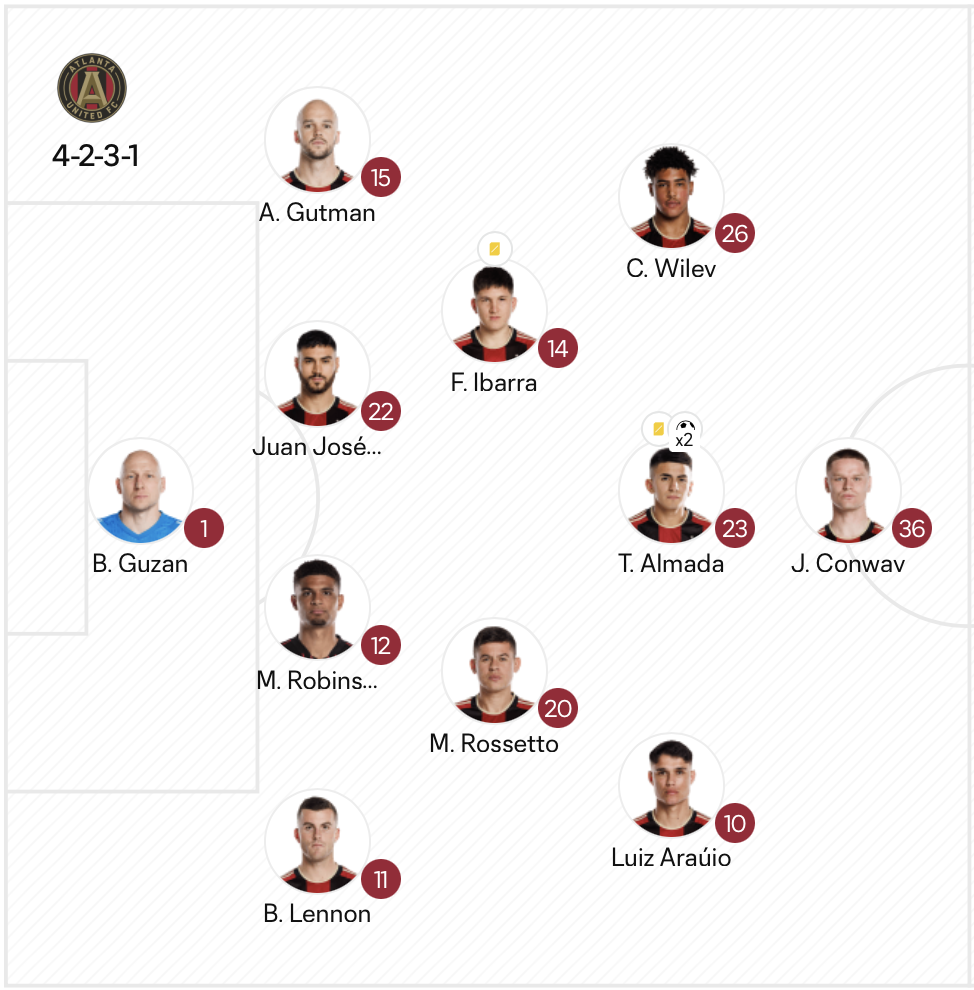

The first thing to notice is that the only change made was up top at striker where Jackson Conway was replaced by Miguel Berry. What’s really worrying about this is two of Atlanta’s big offseason signings–Derrick Etienne, Jr. (I wanted him badly for Charlotte) and Giorgos Giakoumakis (new DP striker)–have yet to start. Giakoumakis came off the bench against Toronto for 31 minutes, while Etienne has come off the bench in both games.
Caleb Wiley, who is listed as a defender on both Atlanta’s site and FBref, has started both games. Last year he saw a good amount of action (26 appearances, 18 starts) as a 17-year-old. According to FBref, he was all over the place, including LB, LW, CM, DM, and WB. Etienne played really well last year for Columbus on the left. I expect him to take that position over at some point soon.
What I think is most impressive about this team, at least on paper, is the depth. We’ll get into their players in a bit, but they have a lot of young talent, veteran leadership, and experience across almost every position.
Injury Report
Last week’s MLS Availability Report had 4 players out for Atlanta: midfielder Ozzie Alonso (ACL recovery) and forwards Tyler Wolff (shoulder), Machop Chol (hamstring), and Giakoumakis (visa). Obviously, Giakoumakis’ visa issue was settled by the game last weekend as he featured.
I wouldn’t expect to see Alonso in this game. He’s a good player and was a big loss for them last season but he is also 37 years old now. That recovery will take time.
As far as Chol and Wolff go, I don’t know their status. Chol only saw 80 minutes of game time over 6 appearances last year, so his inclusion or absence is probably not noteworthy.
Wolff got into 5 games last year (4 starts) but failed to score or record an assist. He also had a short loan spell to SK Beveren in the Belgian Second Division. He was recalled in January having only made 5 appearances (0 starts) for only 41 minutes. He didn’t appear in a game for Atlanta after an April 2nd match against DC. I’m not sure why. Wolff is a talented player, but Atlanta has reinforced their squad. He’ll have a battle for time.
Editor’s note: More on this further down, but looks unlikely that Matheus Rossetto will be playing for them.
Attack
Josef Martínez is no more in Atlanta. Having parted ways (in a somewhat ugly fashion), Atlanta loses a great of their young club. I imagine he will remain a great for that club, though. In his stead, Atlanta turns to Thiago Almada to run the attack.
The 21-year-old Argentinian is a monster talent. He only played in one game for Argentina at the World Cup, and only got in for 7 minutes. But the fact that a 21-year-old MLS player even made it on that squad speaks volumes about his talent (and the growth of this league). It’s not bold to say that he will not be long in this league. Europe will come calling.
Last year Almada made an immediate impact for Atlanta, getting into 29 games (25 starts) and recording 6 goals (6.0 xG) and 7 assists (7.6 xGA). The goals and assists are pretty much bang on those expected numbers, which is pretty impressive. He’s already at 2 goals (0.5 xG) and 1 assist (0.2 xGA) for the season, including single-handedly winning the game for Atlanta against SJ in STOPPAGE TIME:
The man can and will take over games. These goals are ridiculous and help explain his poor xG for this year, but if he can score these types of goals, he will score more common ones too. The xG from last year doesn’t show luck with his goal-scoring or contributing.

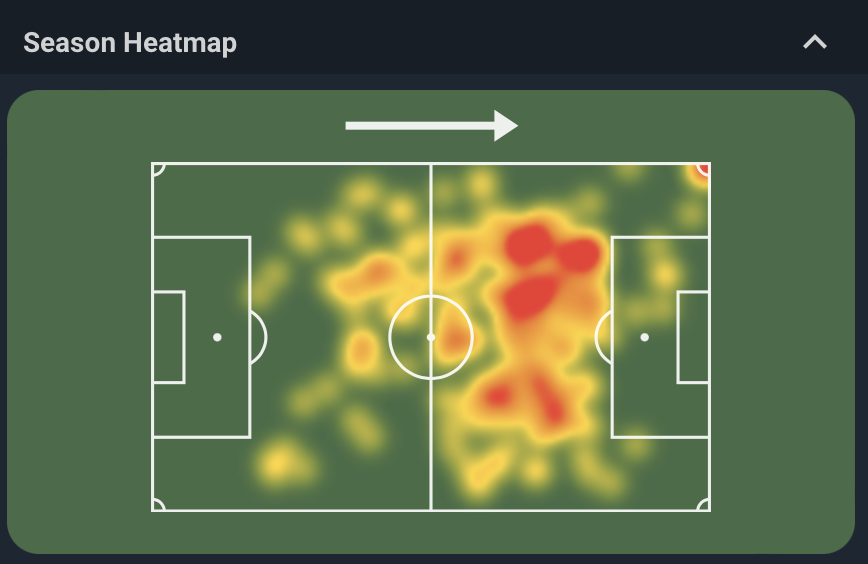
These heatmaps could be used as an exemplar for a CAM. He’s all over the opponent’s half of the pitch and will venture into the box as well. There is a bit of a left-sided bias, so Malanda, Byrne, and whoever is playing as the 6 and right-sided 8 will need to be aware.
Almada wants to dominate the ball, as he should. He was at 73.5 touches/90 last year and is at a ridiculous 97.0 this year. You’re not going to keep him off the ball. The trick is to contain him when he has it.
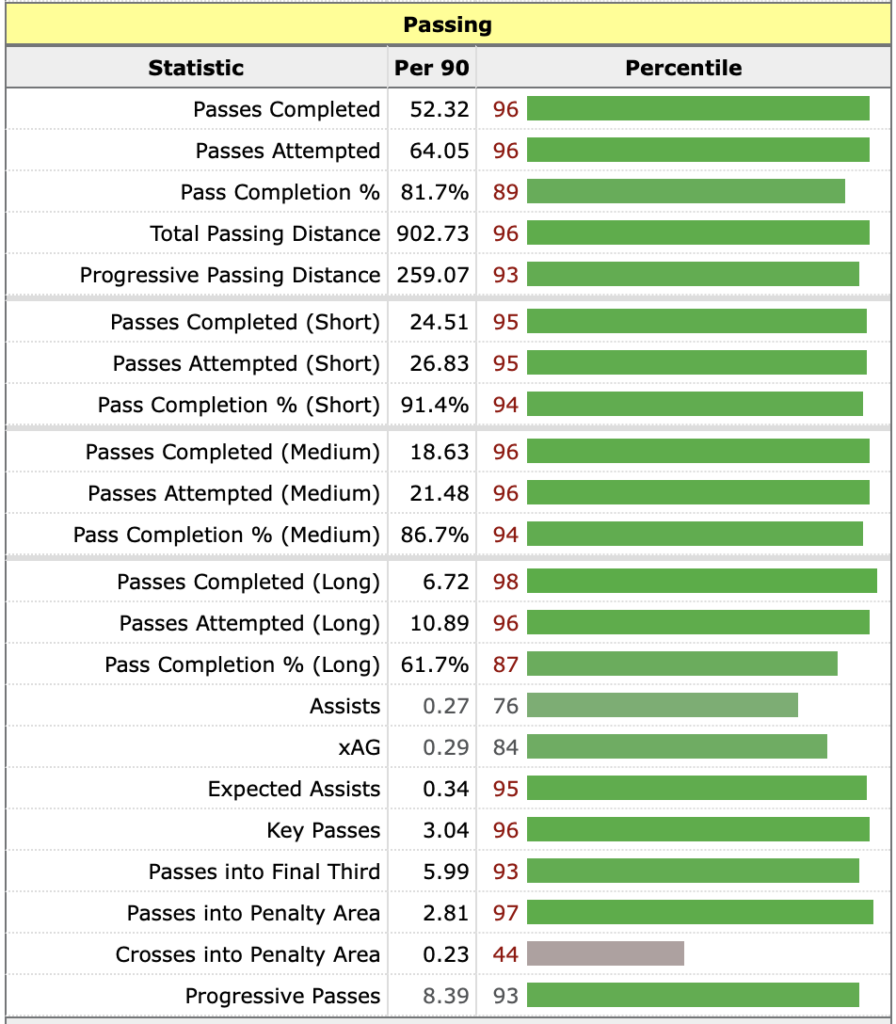
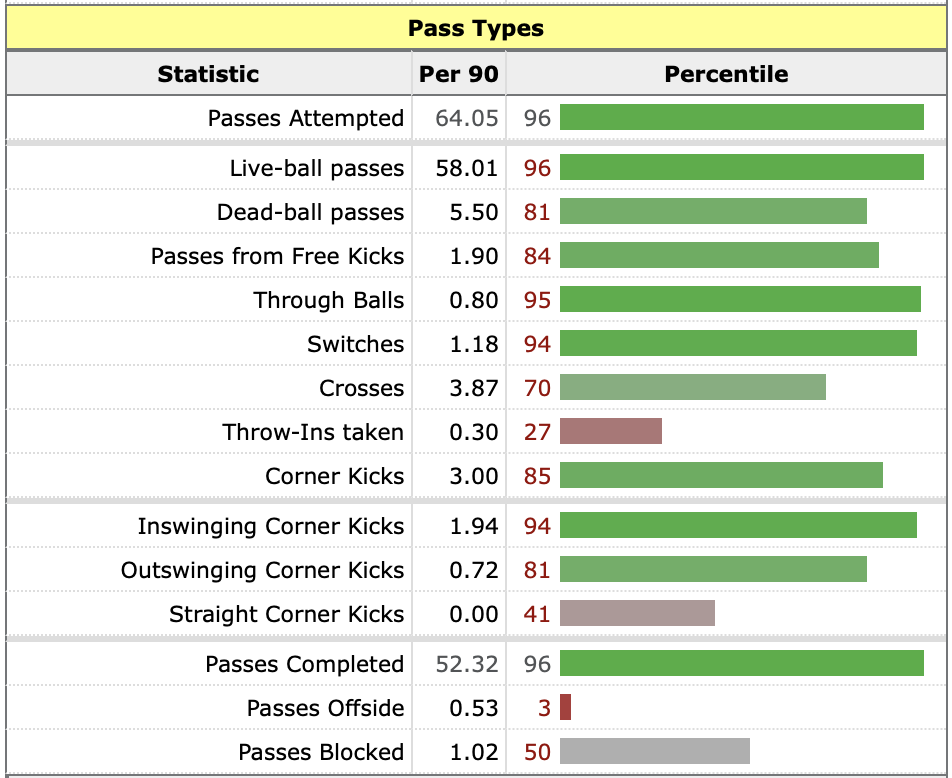
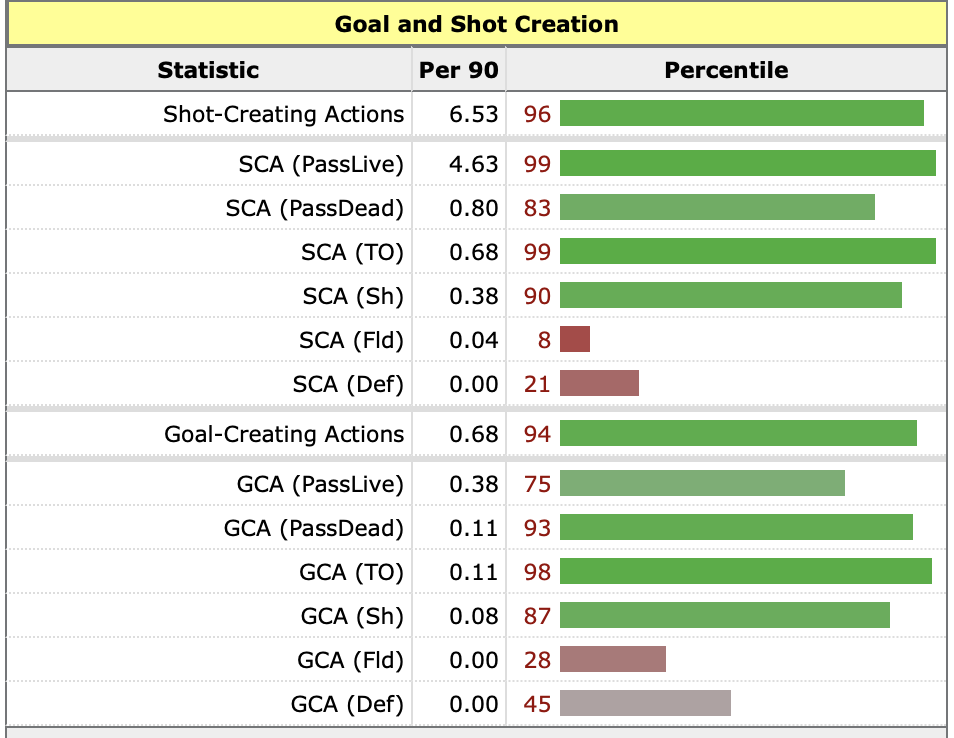
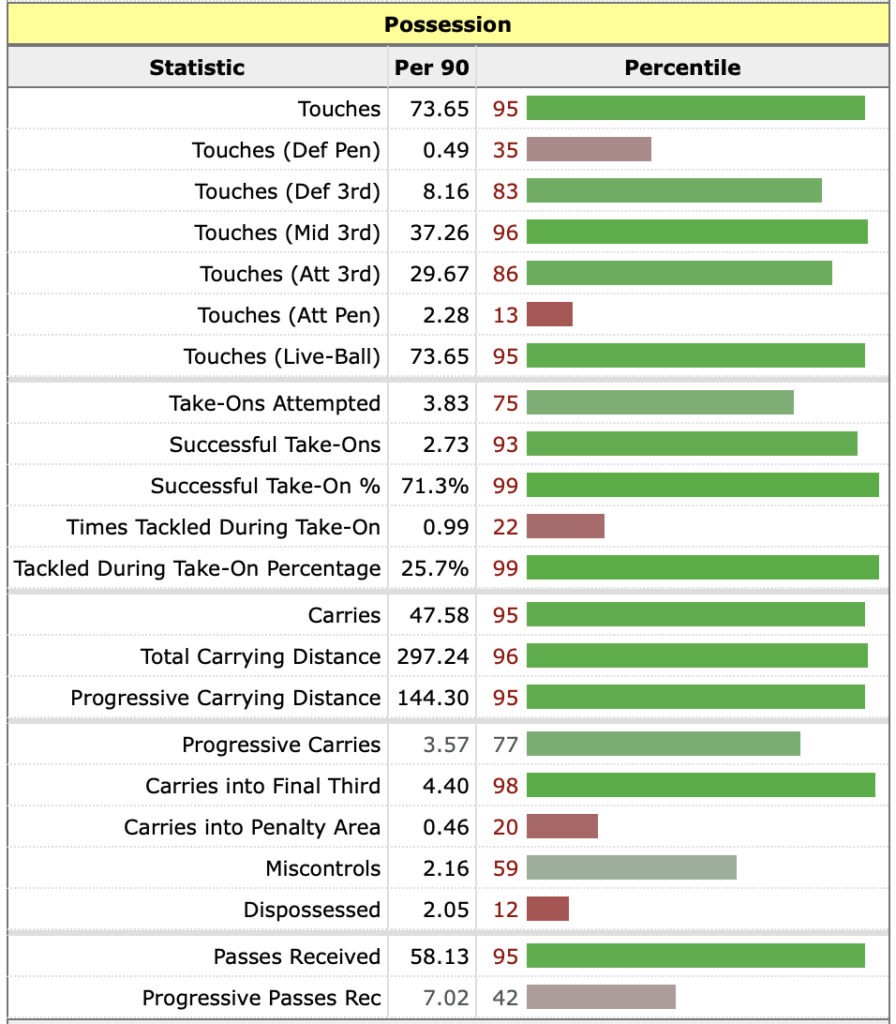
I mean, you just kind of have to laugh at the ridiculousness of these percentiles. This is Almada vs. 2022 MLS CAMs/wingers. Can you say elite? Sure, there are odd issues. The low touches in the attacking penalty are surprising, but he also doesn’t carry into the penalty area much. That then seems to be a feature of his play, not a deficiency. Honestly, the fact that he’s going to score 6-8 goals, if not more, but also pass this well is terrifying.
Atlanta bought Almada for $15.34M; they are going to sell him for a lot more. I would be surprised if, by the end of the summer window, he’s still in Atlanta.
Elsewhere in the attack, you’ll find the aforementioned Etienne, Giakoumakis Conway, and Berry, as well as Luis Araújo.
Etienne had 9 goals and 6 assists in 33 appearances (25 starts) last year for Columbus. As a wing player, that is excellent. Whereas Almada will stay out of the box, Etienne loves to be in there. He was in the 94th percentile for touches in the attacking penalty area/90 vs. 2022 MLS CAMs/wingers.
Giakoumakis is their new DP striker who they acquired for $4.22M from Celtic. Giakoumakis absolutely lit up the Eredivisie for a year with VVV-Venlo. During the 2020-21 season, he made 30 appearances (30 starts) for VVV-Venlo, scoring 26 goals and getting 1 assist. A whopping 8 of those goals were penalties, however, 18 non-PK goals are nothing to sneeze at. This performance got him his move to Celtic where he had a promising first year. In 2021-22, he made 21 appearances (11 starts), scoring 13 goals (12 non-PK goals) and getting 1 assist. His playing time bottomed out this year, though. He made 19 appearances but only had 4 starts (698 total minutes). He did get 6 goals and an assist during this time.
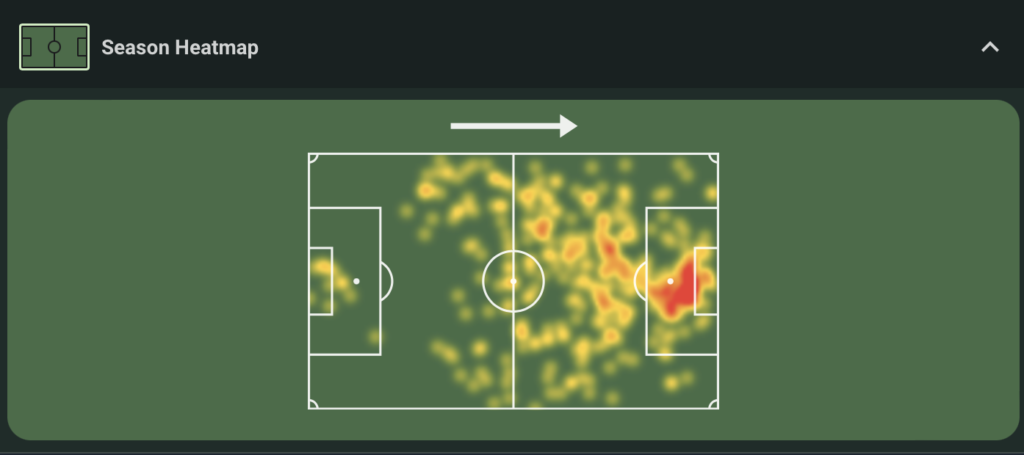

His heatmaps above (left: 2022/23 with Celtic, right: 2021/22 with Celtic) show a guy who likes to be in the penalty box around the goal. There are goals in his boots; I don’t doubt he’ll get quite a few with Atlanta this year.
While Conway and Berry both got the starts to begin the year, both are bit players. In the case of Conway, he’s still very young (21) while Berry is a bit of a journeyman already (although he’s only 25). Conway has yet to score a goal in MLS, but was prolific last year for Atlanta 2 (11 goals and an assist in 25 appearances). Berry, meanwhile, scored 8 goals for Columbus in 2021 in 18 appearances (9 starts). Since then, he’s made 16 appearances (13 starts) for Columbus (2022), 14 appearances (8 starts) for DC (2022), and 2 appearances (1 start) for Atlanta. He has scored 2 goals (both for Columbus) in all of those appearances.
Finally, there is Araújo. He joined Atlanta in 2021 for $11.50M from Lille in Ligue 1. He was 24 when he joined. Believe it or not, the year previous (2020-21), it was Lille who won Ligue 1 (not PSG).
Araújo spent 4 years at Lille, making 108 appearances and 54 starts. He scored 14 goals and had 8 assists, including 4 goals and 2 assists in his final season with them (when he made 27 appearances and 17 starts for the league winners). Yes, Atlanta signed a guy, entering his prime, from a title-winning team in one of Europe’s Big 5.
In his first year with Atlanta, Araújo made 15 appearances (13 starts), scoring 4 goals and getting 3 assists. Last year, he made 28 appearances (26 starts), scoring 4 goals and getting 5 assists. So far this year, he has played the full 90 of both games but is yet to get on the scoresheet.
Araújo is an interesting case because there is some belief he hasn’t quite lived up to the billing. In some ways, I get that argument, but, also, he’s never scored more than 5 goals in a season in his career (and that was in 2017-18). He is constantly between 2-4 goals and 2-3 assists per year. Whether that kind of return should be viewed as a disappointment for a wing DP is up to the reader. Based on his track record, though, I think that’s about what should have been expected of him.
To be honest, I’m not sure why he came here. I’m not a serious follower of the French league. It would seem he would have had options to remain in Europe if Lille were looking to offload him. Perhaps there weren’t? Or perhaps Atlanta offered the best deal? If anyone knows, I’d love to hear it. Regardless, Araújo will play on the right of Atlanta’s attack. Once Etienne and Gaikoumakis find their way into the starting lineup, Atlanta will boast one of the best front 4s in MLS (at least on paper).
Midfield
Atlanta’s FBref page lists 5 midfielders: Franco Ibarra, Matheus Rossetto, Amar Sejdic, Ajani Fortune, and the aforementioned Almada. For reasons that are hopefully obvious, I have included Almada in the “Attack” section. The official MLS site lists a further 6 midfielders: Ezequiel Barco, Marcelino Moreno, Santiago Sosa, Erik Centeno, the injured Alonso, and Etienne, who has also been included in the “Attack.”
Barco, Moreno, and Centeno are all out on loan. Sosa has yet to make an appearance this year, though he made 21 last year. He hasn’t made an appearance for the club since 10/1 against NE. During the game, he used a homophobic slur against the Revolution earning him a fine and a 3-match suspension. He’s currently listed as “unavailable” on Atlanta’s site, so I’m assuming it’s still fallout from his use of the slur. He didn’t make the bench for either of the first two matches. Fortune is a 20-year-old who has yet to make an appearance for the club.
The two starters in both games have been Ibarra and Rossetto, with Sejdic coming off the bench in both games (for a total of 12 minutes). Sejdic did play a lot for Atlanta last year (23 appearances, 18 starts), but some of that was due to injury. He’s a good depth to have and will probably push for a starter’s position. Ibarra made 20 appearances (11 starts) last year, getting one assist. Rossetto started 19 games (24 total appearances) and also had one assist. Rossetto does have a goal on the year, but neither is in the team to score.
Rossetto has been with Atlanta since 2020 and has made 62 appearances (46 starts). He’s an excellent buildup passer, as his percentiles show:

Yeah, that’s basically everything you want from a deep-lying playmaker. Additionally, he likes to dominate the ball (80.90 touches/90) and is able to carry it well (96th percentile for progressive carrying distance). Defensively, he’s nothing to write home about but does like to regain the ball up the pitch (77th percentile for tackles in the attacking 3rd). He’s not bad defensively, but I’d label him as below-average overall.
Ibarra is the yin to Rossetto’s yang. The 21-year-old Argentinian arrived in Atlanta in 2021 as a 19-year-old. He immediately started playing in the first team, making 16 appearances and 9 starts. Last year he made 20 appearances and had 11 starts. At only 5’8.5″ and 152 lbs, Ibarra doesn’t fit the mold of a defensive destroyer, but he is.
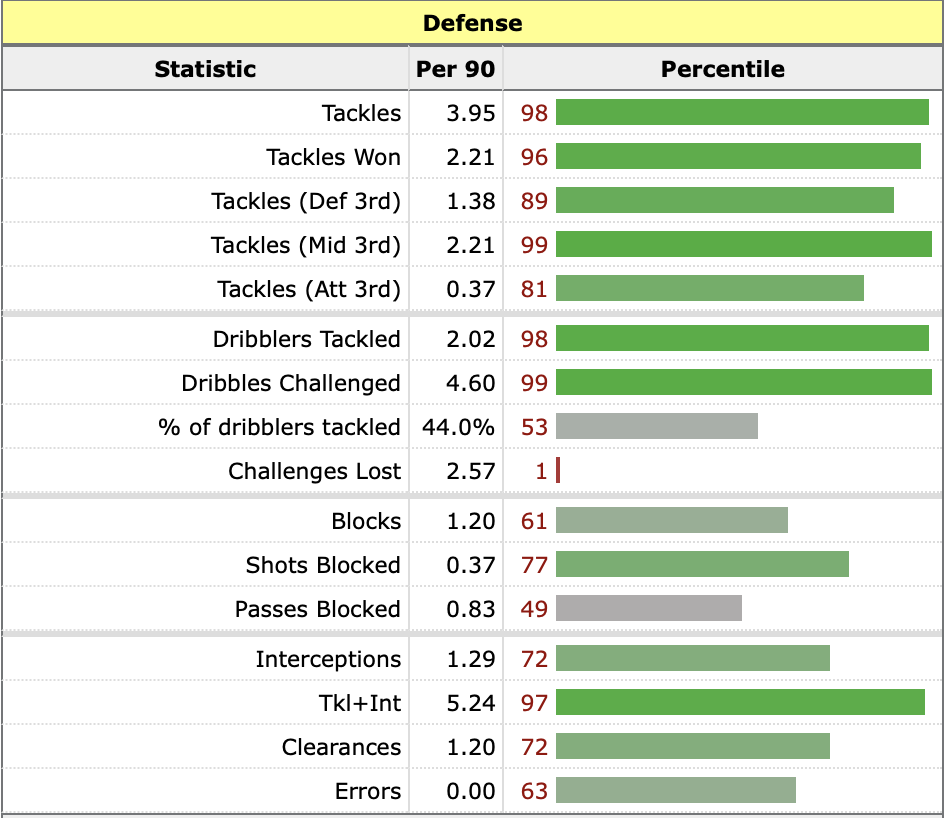
It’s clear that Ibarra is in this team to clean up any attacks. These numbers, especially for a (then) 20-year-old, are superb. Unlike Rossetto, he’s not a good passer (56th percentile for passes completed, 49th percentile for progressive passing distance, 47th percentile for total passing distance) nor is he great on the ball (33rd percentile for take-ons attempted, 42nd percentile for carries, 3rd percentile for progressive carries). He doesn’t have to be, though. Soccer is about balance and Atlanta has it in this midfield pairing.
With attackers like Almada and Araújo and passers like Rossetto, you don’t need another offensive-minded player. You need someone who will retain possession, regain possession, and snuff out the danger. Ibarra most certainly does that.
Sejdic, who has come off the bench so far this year, is a good balance of Rossetto and Ibarra. He’s a better passer than Ibarra, but only an above-average one. He’s a really good defender, but not quite as good as Ibarra. As a player to see a game out, he’s perfect. As a player to fill in for either starter, he’s a great option. If Rossetto has to sit, you’d lose some passing ability in the midfield but the defensive nous would be incredibly high. If he had to replay Ibarra, the defensive drop would be minimal but you would add some passing range. I’m a bit jealous of this trio.
Editor’s note: It appears that Rossetto is likely to miss the match. While I believe that this will be a big miss for Atlanta, their fans very much disagree. In the words of many of their fans, he’s “mid.”
Unfortunately, none of them in this thread could give me a good reason for this belief. I was just told either 1) he passes sideways (which the above numbers show is not true; 82nd in progressive passes is the antithesis of “just passing sideways”) and 2) “trust me, bro.” That kind of argument is the one that makes me most upset. I’m willing to admit that I have missed something with Rossetto and that I am perhaps overrating him. I need a better reason than an “eye test” without actual analysis.
Defense
There was a time last year when Atlanta and Charlotte were both fielding an Alan Franco. Alas, our Franco has long departed (the club, not the Earth) and Atlanta has also moved theirs on. To replace Franco’s 31 starts at center back, Atlanta has signed Luis Abrams from Granada, though he only has one appearance off the bench for 11 minutes. Abrams spent the past 2 seasons on loan at Cruz Azul in Liga MX, making 25 appearances (18 starts).
In reality, Abram isn’t the one who will be replacing Franco; Juan José Sánchez and Miles Robinson will. Sánchez is in his 2nd year with Atlanta, having joined from UANL in Liga MX. He made 17 appearances (16 starts) last year and scored an amazing 6 goals. Considering those are the only goals of his 6 season career, I don’t know that I would expect a repeat of them. Robinson is in his 7th season with the club, having made 98 appearances (87 starts). He only got into 9 games (8 starts) last season after having 26 appearances in 2021 due to an Achilles tendon injury. Thankfully, he appears to have fully recovered from that injury.
Robinson is a good passer from the back (82nd percentile for passes completed, 95th percentile for progressive passes, and 73rd percentile for key passes). He’s not a great long-range passer (45th percentile for long passes completed), but he also doesn’t attempt that many of them (46th percentile for long passes attempted). Defensively, he’s tough to get around (93rd percentile for challenges lost) and has good positioning (99th percentile for blocks, 82nd percentile for shots blocked, 98th percentile for passes blocked). Sánchez is just an average passer but shows a similar ability to read the game (88th percentile for blocks, 63rd percentile for shots blocked, 92nd percentile for passes blocked). Neither is overly threatening in the air (Robinson: 68th percentile of aerials won; Sánchez: 77th percentile in aerials won), but both are serviceable.
Abram looks like a stereotypical depth (probably 4th choice) center-back. Nothing jumps out in his percentiles (in his case being compared to 2022/23 Liga MX CBs) except that he’s terrible in the air (1st percentile for aerials won).
The other defender in this center-back equation is George Campbell. The 21-year-old American has yet to appear in a game this year, but got into 35 over the past 2 seasons, including 20 appearances last year. While he’s mainly been deployed as a CB, he has had a couple of games in the midfield (in a pinch). To me, he would appear to be their 3rd choice with Abram as depth.
Atlanta has some really good and interesting pieces at fullback. The two starters are Andrew Gutman and Brooks Lennon, while Aiden McFadden (0 appearances this year, 11 last year) and Ronald Hernández (0 appearances this year, 13 last year) provide depth.
Gutman and Lennon are the kinds of fullbacks Charlotte fans are clamoring for, but not the types that I think Lattanzio is looking for. Just look at these maps:
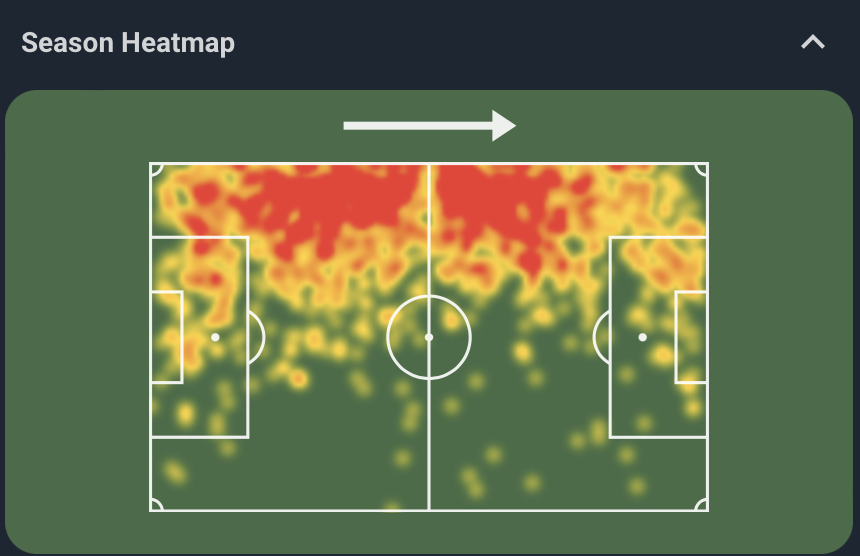
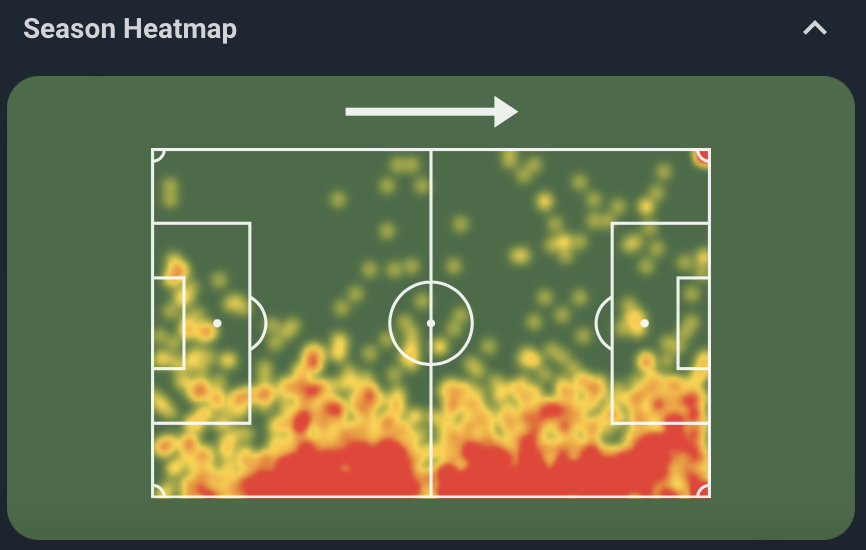
My god, is Lennon even a fullback or just another winger? The answer is winger, as Araújo very much likes to come inside. These types of bombarding fullbacks are what I think most fans expect to see, but as I talked about on Twitter, that’s not what CL is looking for (these are decently long threads there, so check out the full things if you have interest).
Last year was Gutman’s first in Atlanta. He made 25 appearances (22 starts), scoring 4 times and getting 1 assist. Fun fact: Gutman began his professional career with Charlotte in the USL Championship back in 2019.
Lennon is in his 4th season with Atlanta, making 82 appearances (73 starts) during this time. He has 4 goals and 14 assists for Atlanta, including a 2-goal, 6-assist season last year.
These guys both like to get down the sidelines. Coupled with Rossetto and Almada’s passing ability, it makes for dangerous situations. Atlanta is currently leading the league in possession at 63.5%. With the way they push these fullbacks up, that’s no surprise. If they don’t have the ball, they’re at serious risk of the counter. Charlotte is going to need to be smart, decisive, and quick with the ball when in transition.
Goalkeeping
Old–and I use that term literally–friend Brad Guzan continues to man the sticks for Atlanta. Behind him is his geriatric companion Quentin Westberg (36), who was acquired for free from Toronto. Clément Diop, 29, was also acquired on a free from New England. Diop never appeared for NE last year and made just 3 appearances for Miami. Westberg, meanwhile, made 10 appearances for Toronto in each of the past 2 seasons. He did play a few games in the French Ligue 2 (13 starts for Auxerre in 2018-19 being the most), so, as a backup, he’s not a terrible option.
Guzan is obviously meant to be the starter. Like Robinson above, Guzan ruptured his Achilles last year, missing most of the year (he only had 7 starts last year). Now in his 7th season with Atlanta United, the former Aston Villa keeper is…okay.
The raw numbers still look decent: 1.32 goals allowed/90 (GA90) in 2022; 1.00 GA90 in 2021; 1.30 GA90 in 2020; 1.26 GA90 in 2019. The advanced metrics aren’t so kind. Over these 5 years, he’s had 2 seasons in the positive: 2019 when his PSxG+/- was +0.4, and 2021 when it was legitimately good at +4.9. Otherwise, he’s been in the negative including years of -1.9 (2020), -1.1 (2022), and -0.5 so far this year. Now, he’s not terrible by any stretch but he’s a 38-year-old goalkeeper. A decline is normal and to be expected. On a good team, he’s still a fine option.
Where he does still excel is in his reading of the game. Fair warning that due to his injury, last year’s percentile ranks do constitute a small sample size. With that said, he was in the 62nd percentile of crosses faced, but the 96th percentile for crosses stopped and the 99th percentile for crosses stopped percentage. This shouldn’t worry us Charlotte fans at all since our crossing is so terrible that we weren’t going to score that route anyway.
Conclusion
Saturday is not a game that has me confident. Almada is so much better than I thought. On paper, Ibarra and Rossetto form a perfectly complimentary midfield pivot. Araújo is good on the right wing. Both their fullbacks are really good going forward. They dominate possession. They haven’t even started Etienne or Giakoumakis yet. In some ways getting them right now might be a slightly good thing, as Giakoumakis might still not be ready to start for them. On the other hand, I’m not sure how much it’s going to matter.
Against San Jose, Atlanta had 20 shots with 5 shots on goal. Against Toronto, they had 16 shots with 6 shots on goal. That’s 36 shots and 11 shots on goal in two games. Charlotte is at 21 shots and 8 shots on goal for their 2 games. Atlanta dominated possession in each of these games (60.4% against SJ, 66.7% against TOR). Against Toronto, they made 619 passes with a 90% passing accuracy. I’m going to say that again: 90% passing accuracy on 619 passes.
Let’s also not forget that they’ve only allowed 2 goals on the season. San Jose scored 52 goals last year (10th in the league), while Toronto scored 48 (13th in the league). These are not slouches on offense. Yes, Toronto was missing Insigne, which can’t be ignored, but the game plan of Atlanta seems clear. Dominate possession, pass the ball around, and let the attackers eventually win.
I was much more pessimistic about this game when Rossetto was going to play (though I can’t say I’m optimistic…). First, I do believe he’s a good player, especially for the system they are playing, regardless of what Atlanta fans have told me. Second, it seems that they will not just be plugging Sejdić into the system in his place. In Jones’ tweet, he mentions that ATL’s coach Pineda said they are not “set up for two 6s” without Rossetto. This would indicate to me that Rossetto’s absence might also necessitate a change in formation/tactics. If so, it’s always a good thing to me when a team is forced off of their first choice gameplan.
On the Charlotte side of things, Lattanzio has come out and said that the Bronico experiment at LB will continue.
This is good news to me. I’m hoping we see some tactical complexity come into the squad as he learns the role. For this week, it’ll be a tough challenge for him. Atlanta is a good attacking team.
I don’t expect many changes to the team we saw against St. Louis, though I am hoping for 2.
First, I need Świderski to be back in the middle of the pitch. RW did not work for him. On that wing, I do think I would give Vargas the start. He’s looked so bright to start this season; it feels deserved. While I do want Nuno to start, I’m not sure CL is there yet. A midfield of Świderski-Westwood-DJ is the next best option.
I expect Malanda and Tuiloma to bounce back from their mistakes against STL. That bad pass is the only time I can remember Malanda putting a foot wrong. Tuiloma was unlucky, as he did everything but the timing of his jump correctly. The big piece in the backline is Byrne at RB. He was so good last year in his first appearances for the club. This team needs him to get back to that level. We can’t be trying to figure out both fullback positions at the same time.
Prediction: Charlotte 1 – Atlanta 2
Data Notes: All heatmaps come from Sofascore.com. All percentile rankings and percentile charts come from FBref.com. All formation graphics are from MLSsoccer.com. Other websites used for data include transfermarkt.us, Wyscout.com, and MLSsoccer.com.
